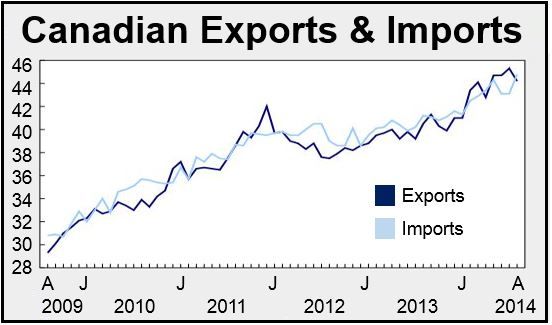Canadian exports fell in August while imports surged, resulting in the country’s first trade deficit in four months. August’s C$610 million deficit contrasted with July’s C$2.2 billion surplus.
Imports surged to a record $44.8 billion, driven by metal and non-metallic mineral products plus energy products. Volumes overall rose by 2.4% while prices increased by 1.5%.
Of the 11 export components used by Statistics Canada, 9 declined in August, resulting in a $44.2 billion decrease. Exports of motor vehicles and parts as well as energy products fell significantly. Export volumes overall were -1.8% down, while prices declined by -0.7%.
Imports from non-US nations rose, exports fell
Imports from non-US countries in August increased by 9.3% to $15.1 billion. Imports from “all other countries” were driven by crude oil and crude bitumen.
(Data source: Statistics Canada)
Exports to “all other countries” fell by -2.5% to C$10.9 billion. Exports to the European Union declined by -4.4%, and by -9.9% to Japan.
Trade with the United States
Imports coming in from the United States increased by 1.4% to C$29.7 billion.
Exports delivered to the US fell by -2.5% to C$33.3 billion. Sales of motor vehicles and parts as well as energy products declined markedly.
Canada’s trade surplus with the US shrank to $3.5 billion in August from $4.8 billion in July.
The figures are another setback for the world’s 11th biggest economy, after GDP growth slowed down in July.
In September, Stephen Poloz, Governor of the Bank of Canada said he detected the early signs of a needed push toward export-led growth and business investment.
Peter Hall, chief economist at Export Development Canada, described Augusts trade figures as “a bit of a cold shower.”
Mr. Hall said:
“Even though we’ve taken a one-month hit here, it certainly is a pause in a very strong trend.”


